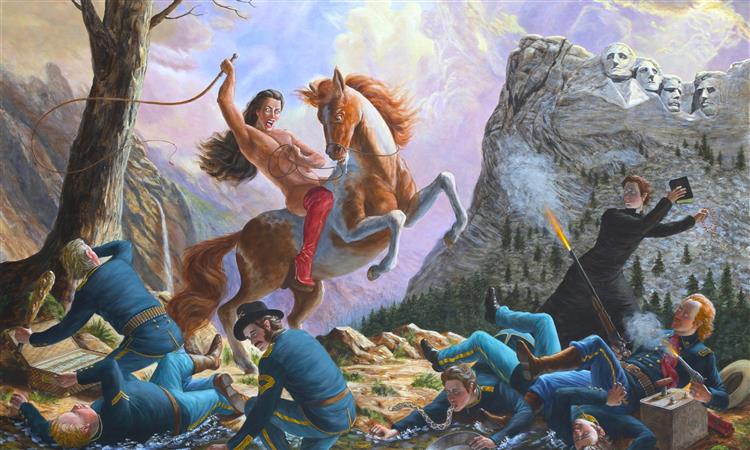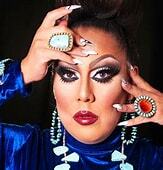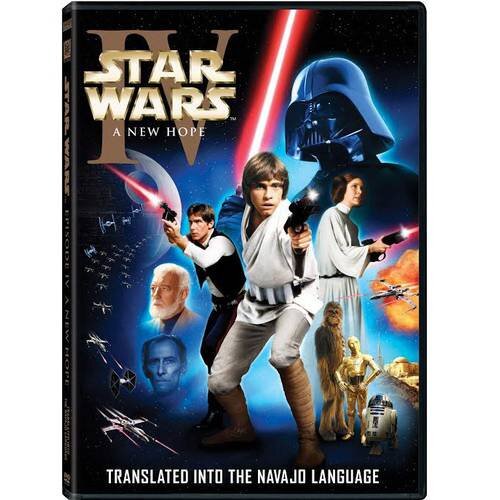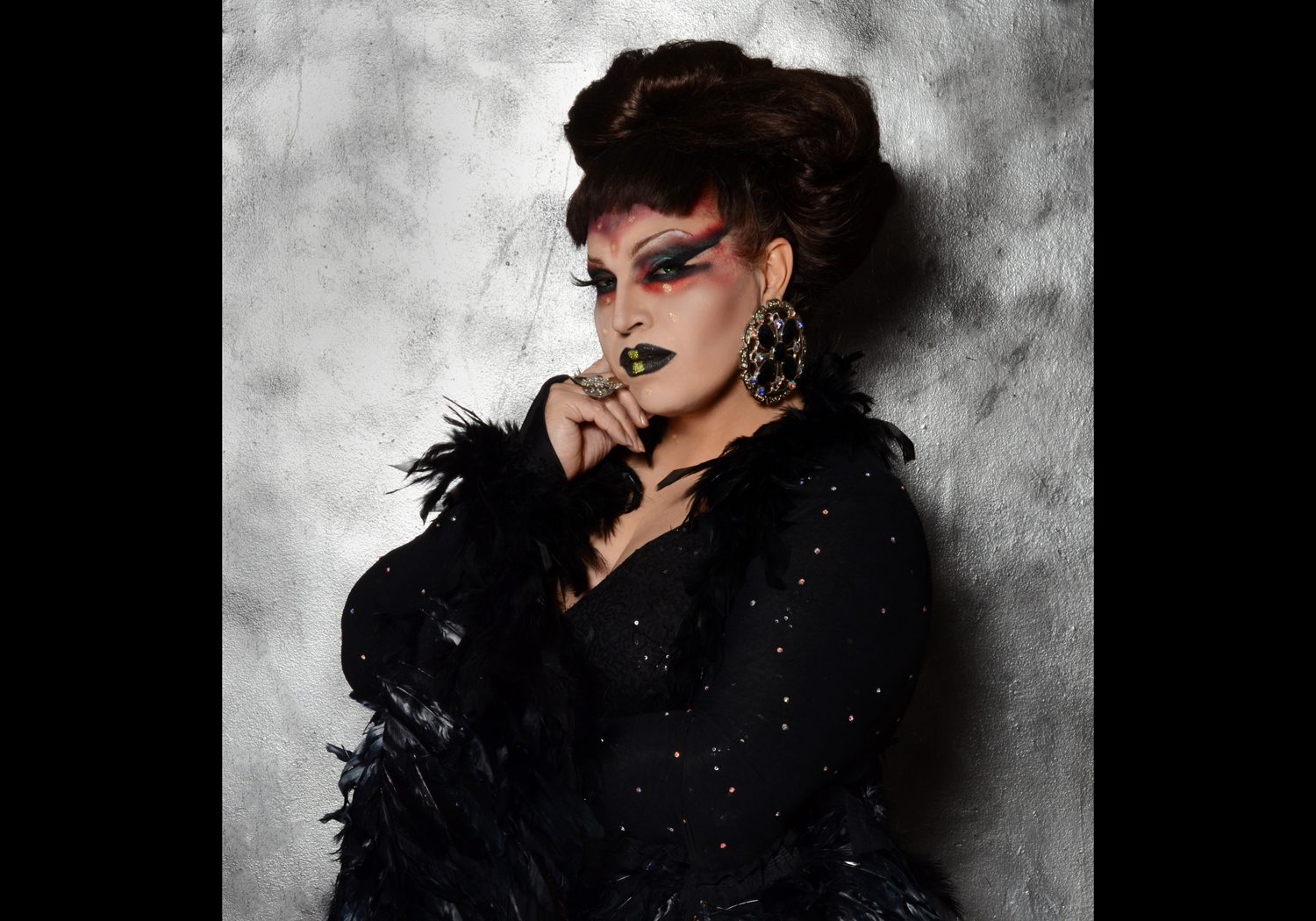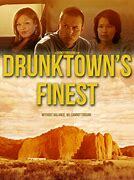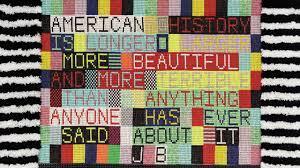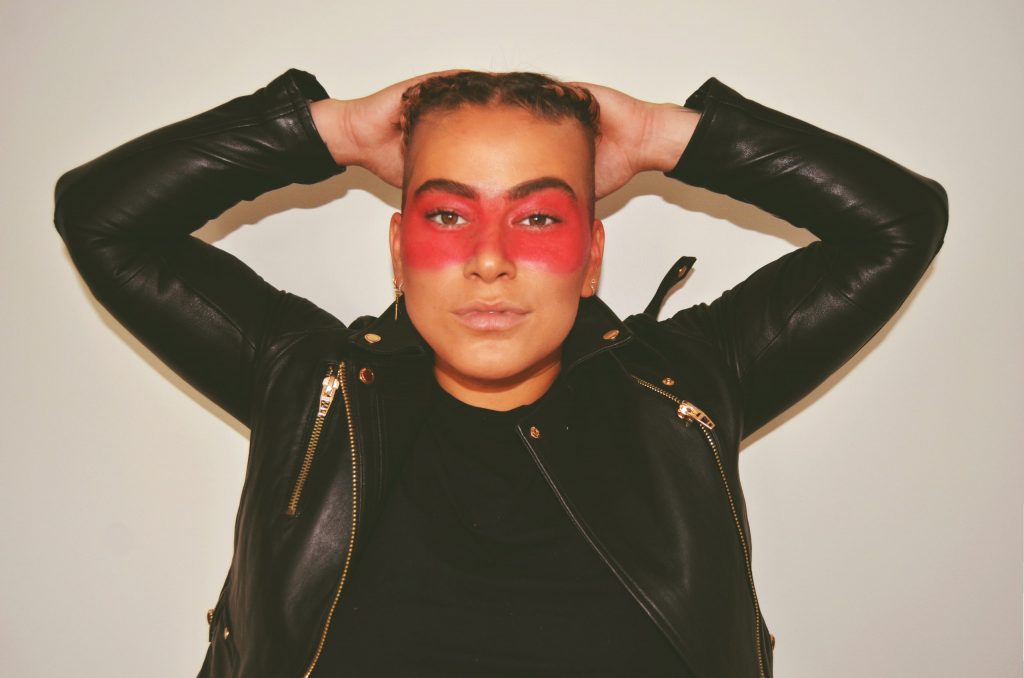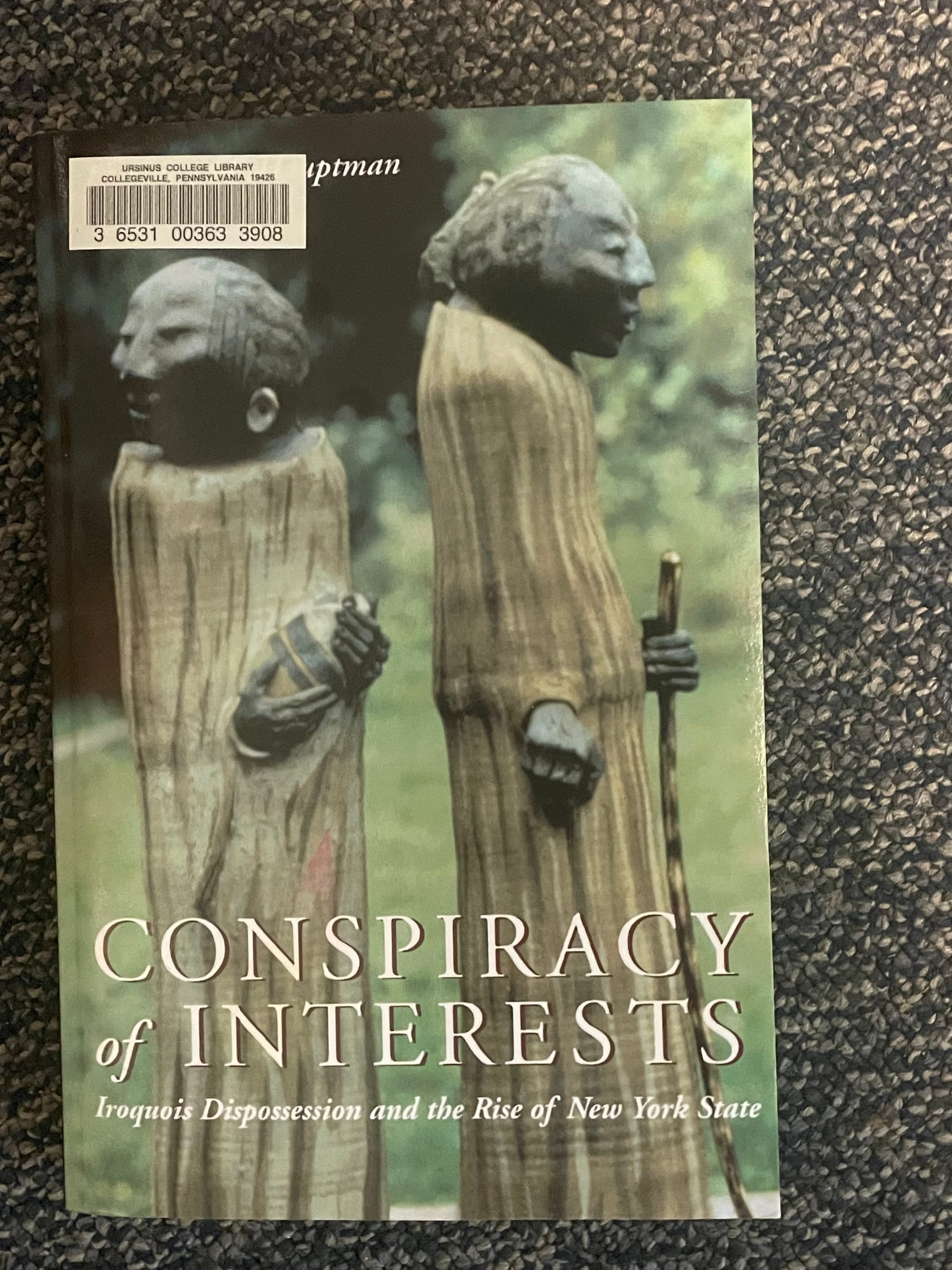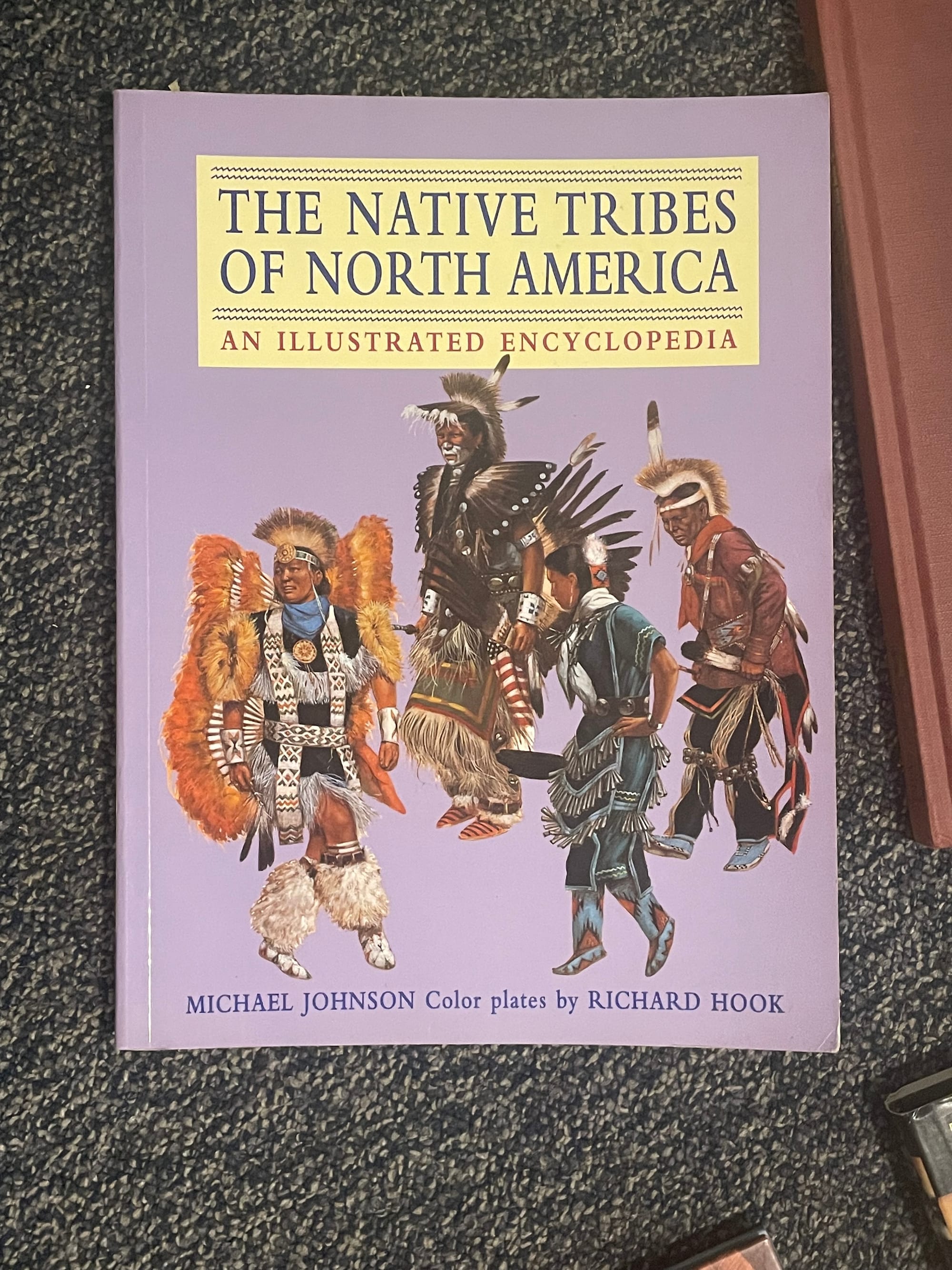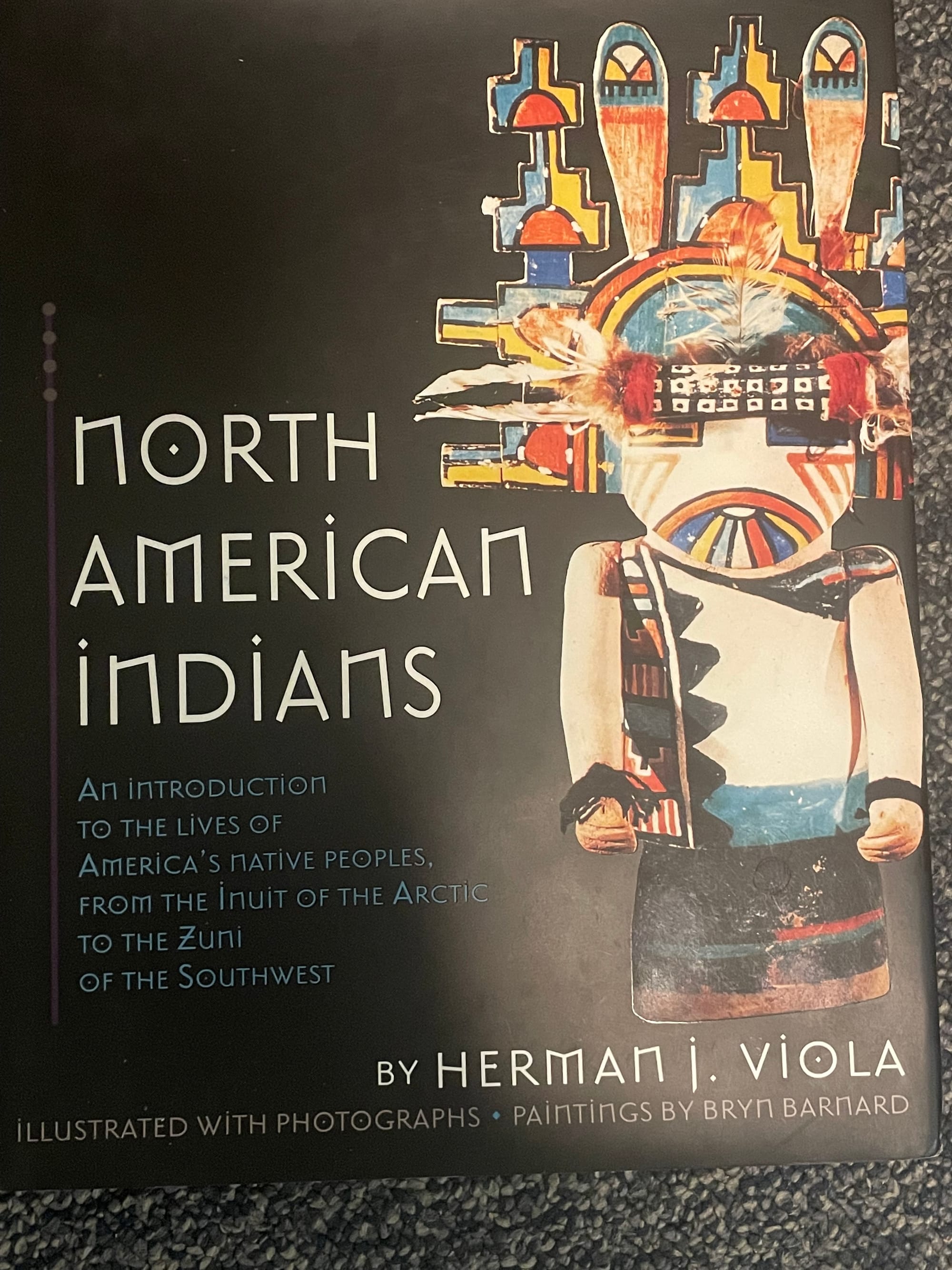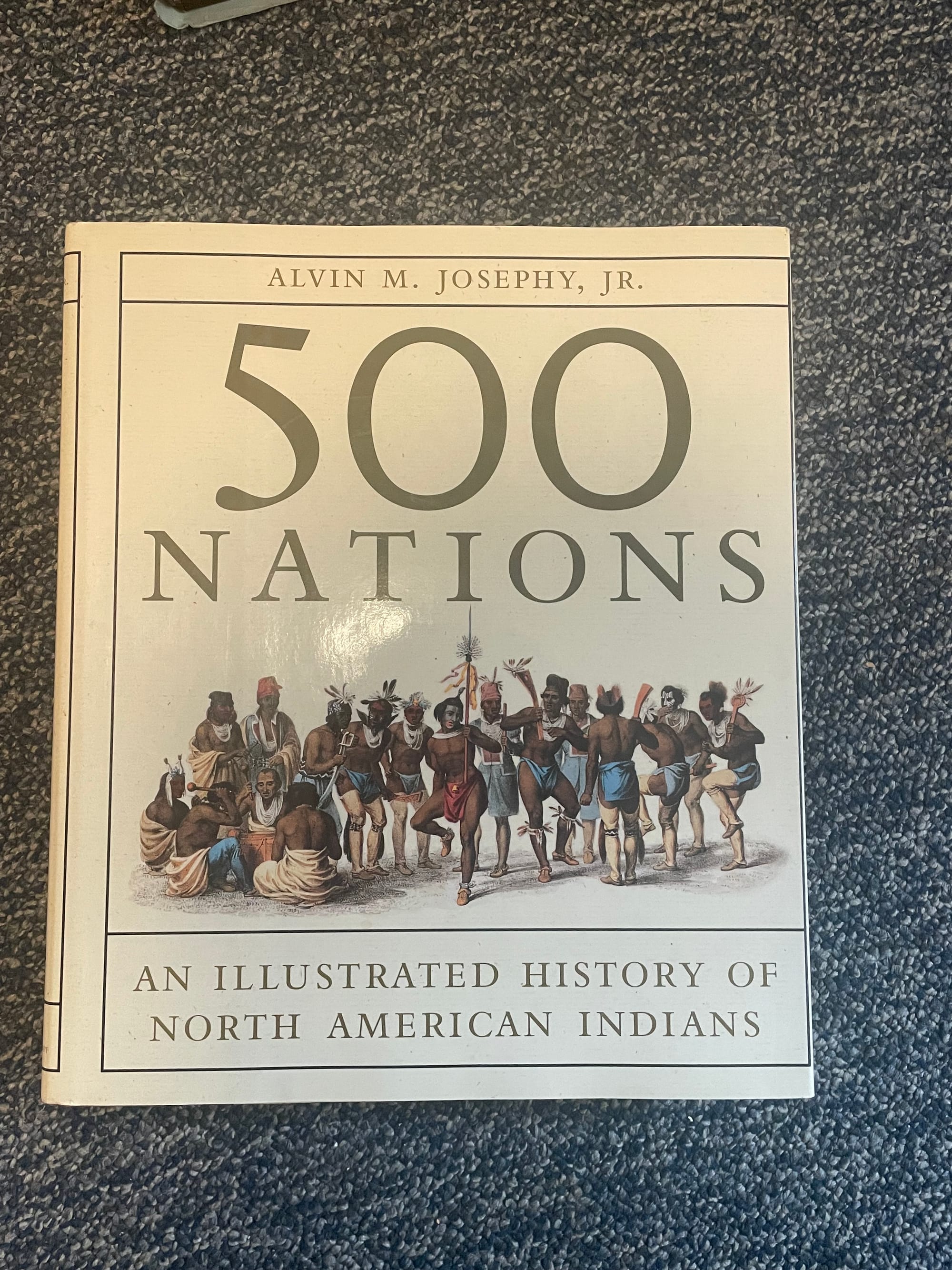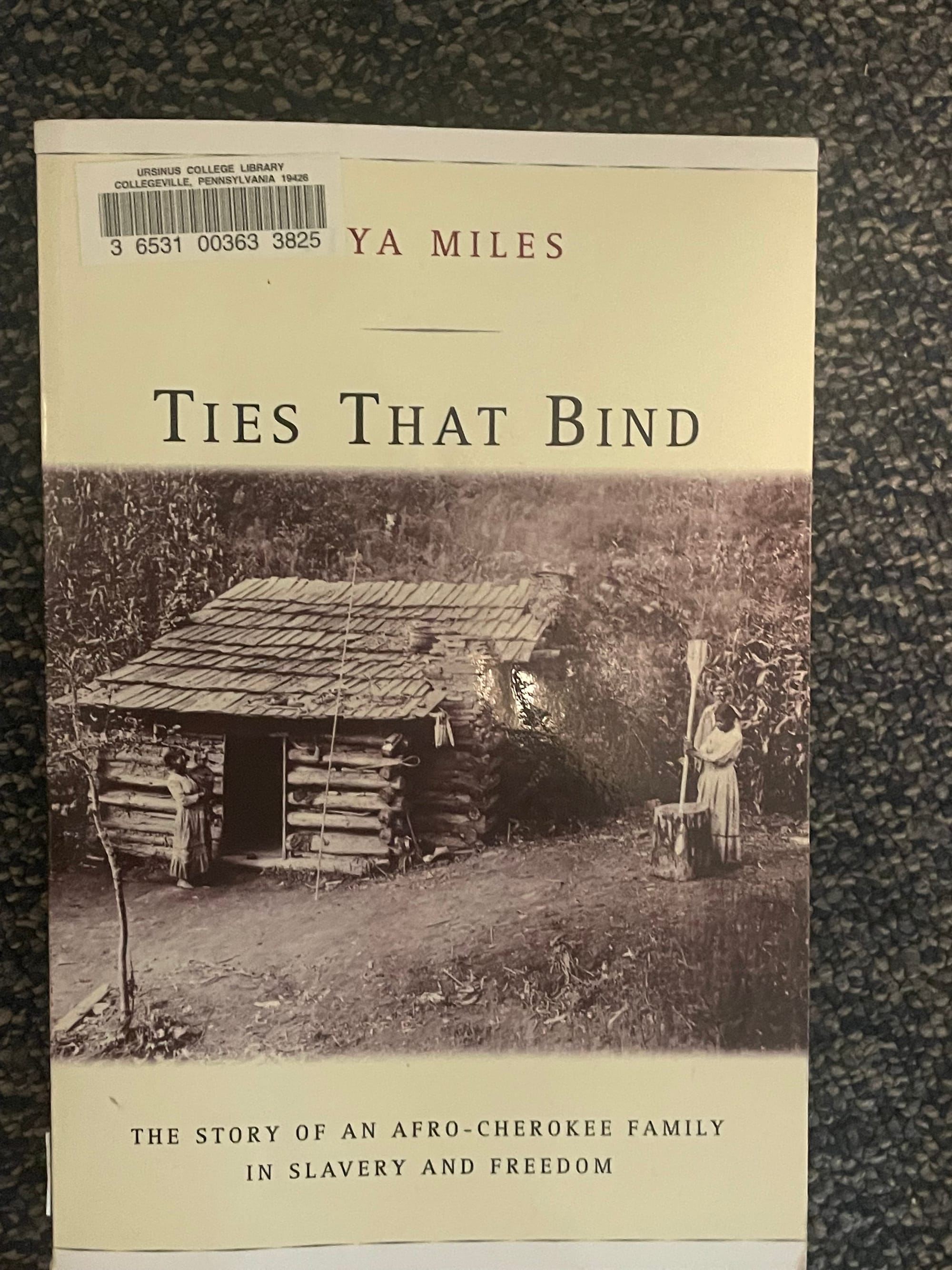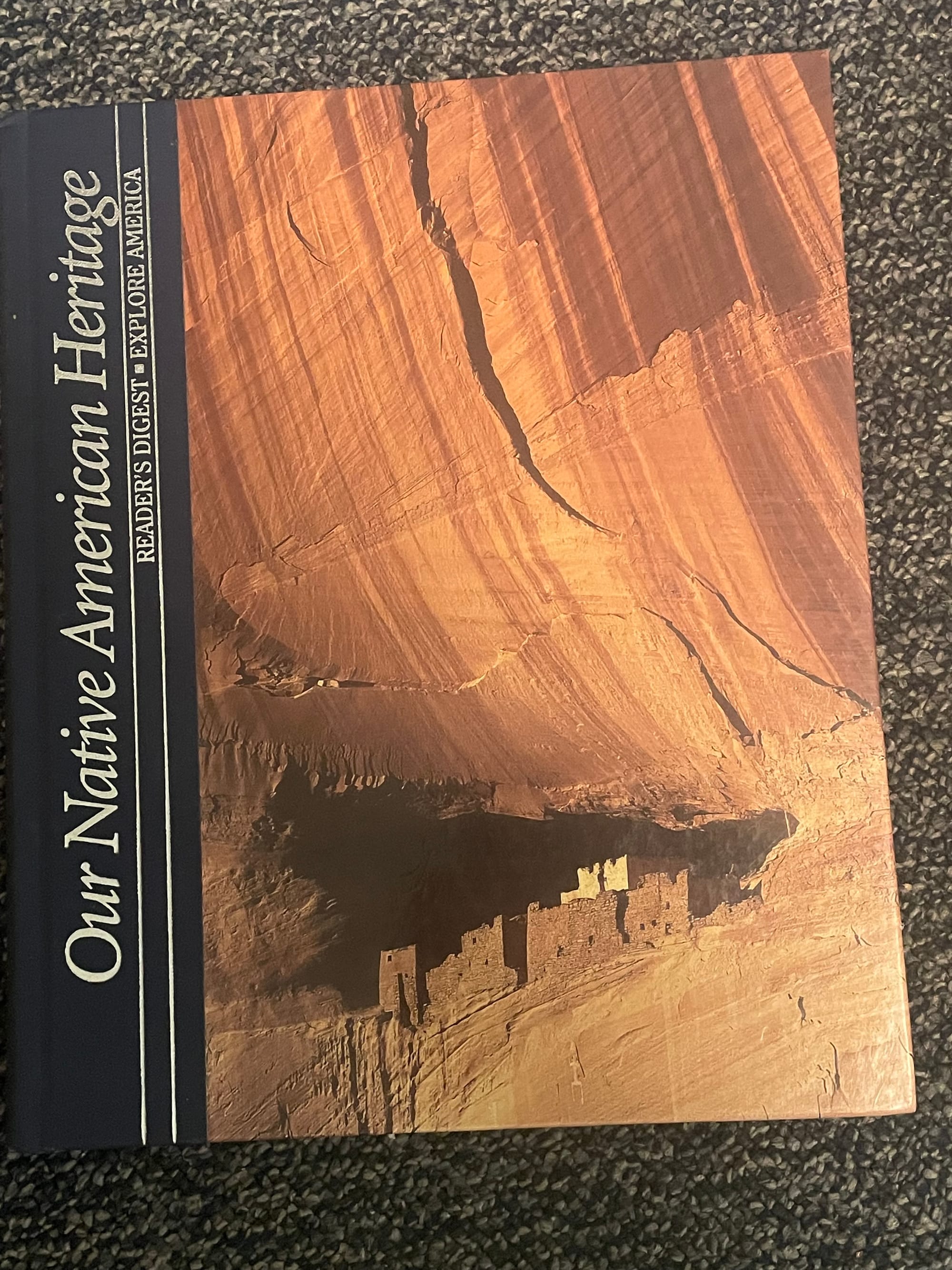Liam Reilly - Summer Fellows 2022 Project
Visibility Suggestion
While this website is viewable in both mobile and desktop view, the formatting works better when using the full desktop view.
Scholarship Acknowledgement
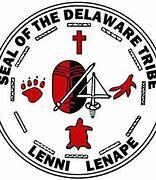
Ursinus Welcome Home Webpage: https://www.ursinus.edu/welcome-home-project/
Delaware Tribe Website: delawaretribe.org
Ursinus Land Acknowledgment Statement and Scholarship Acknowledgement
https://www.ursinus.edu/about/ursinus-college-land-acknowledgment-statement/
https://www.ursinus.edu/welcome-home-project/statement-of-mutual-intentions/
Statement of Positionality
Most Frequent Abbreviations You Will Encounter
AAA: American Anthropological Association
AICH: American Indian Community House
AIDS: Acquired Immune Deficiency Syndrome
AIGL: American Indian Gays and Lesbians
AIM: American Indian Movement
APA: American Psychiatric Association
AQA: Association for Queer Anthropology
ARGOH: Anthropological Research Group on Homosexuality:
BDSM: Bondage and Discipline, Sadism and Masochism
BLW: Black Leather Wings
LGBTQ+: Lesbian, Gay, Bisexual, Transgender, Queer
GLF: Gay Liberation Front
HIV: Human Immunodeficiency Virus
IAC: International AIDS Conference
IHS: Indian Health Service
MACT: Men of All Colors Together
MSM: Men Who have Sex with Men
MMIWG: Missing and Murdered Indigenous Women and Girls
NAISA: Native American and Indigenous Studies Association
NASTAD: National Alliance of State and Territorial AIDs Directors
NE2SS: North-East Two-Spirit Society
NGLTF: National Gay and Lesbian Task Force
NGO: Nongovernmental Organization
NGTF: National Gay Task Force
NNAAPC: National Native American AIDS Prevention Center
OCAP: Ownership, Control, Access, and Possession
SOLGA: Society of Lesbian and Gay Anthropologists
WLW: Women Loving Women
YMCA: Young Men's Christian Association
Abbreviations through Professor Scott Morgensen's Space Between US ISBN 9780816656332
The Importance of Language
Language and terminology are both a tool to uphold and decolonize a settler-colonial society. It is also essential for increasing accuracy in historical writing. There are a variety of both tribal specific and western labels for queer identifying Indigenous individuals and understanding both the labels themselves and the history behind them. If you are unsure on which term to use, try your best to find it out before using a broader term. Indigenous LGBTQ+ experiences and language have a variety of factors that shape identity, and the scholarship surrounding it should reflect that complexity.
2-Spirit or LBGTQ+ Indigenous Person: The usage of either term, a reclamation of the derogatory term berdache (see the following link for full word origin and history): berdache | Definition, Examples, Two-Spirit, & Facts | Britannica ), or a tribal specific term will vary upon the individual and can be influenced by a myriad of factors. 2-Spirit has commonly been defined, following Albert McLeod's 1990 coining of the phrase, as "a translation of the Anishinaabemowin term niizh manidoowag, refers to a person who embodies both a masculine and feminine spirit." (Filice, Michelle. "Two-Spirit." The Canadian Encyclopedia. Historical Canada. Article published October 28, 2015; Last Edited July 03, 2020.). However, its applicability supersedes the definition when placed within an individual's personal applicability of the phrase. It is a widely used term for discussing Indigenous people within the LGBTQ+ identity. Many times, Indigenous queer expression goes beyond the constructions of gender and sexuality within a white settler-colonial society. Using the term(s) that an individual identifies it serves as both a point of validation and historical accuracy. Search specificity for terms to use when describing an LGBTQ+ Native American before opting for 2-Spirit or LGBTQ+ Indigenous. More recently terms such as Indigiqueer to reflect the inseparability of both identities have been used, but they are not as common (The future is Indigiqueer | Xtra Magazine ).
For further breakdown of two-spirit, please see the website below.
What Does "Two-Spirit" Mean? | Them
Settler-Colonialism: Understanding the existence of 2-Spirit artists under a settler-colonial society, one what even is upheld by non-Native LGBTQ+ individuals. Settler-colonialism is the forced and intentional eradication and replacement of Indigenous culture and existence to be replaced with the settler's systems of beliefs and institutions.
Settler Colonialism – GLOBAL SOCIAL THEORY
Decolonization/Indigenization
Indigenization is the transformation of belief, language, and system by Indigenous individuals on their terms.
Decolonization: The theoretical and physical undoing of colonialism, or in this case settler-colonialism.
Further considerations:
Even LGBTQ+ terms such as Nonbinary and Transgender can be an extension of settler-colonialism to many of these artists. This is because the terms and that construction of gender are still upholding Western systems of thought and belief. 2-Spirit/Indigiqueer identity goes beyond the confines of these terms and recognizing that is in turn recognizing the unique position these artists find themselves under.
Using proper pronoun usage is vital! Always check for what pronouns are used within the article and do a search to ensure proper pronoun usage!
Much of the queer scholarship and theory is built on the basis of white settler-colonial systems of beliefs. Please see the book recommendation section of the site for an excellent book that encapsulates the space Indigenous queer people operate in. There is an increased complexity in this intersecting scholarship, and the Honus is on the scholars to do the research and educate us.
Common Themes and Mediums
Mediums: 2-Spirit and Indigenous LGBTQ+ artists use all types of arts in order to create their art. Many choose to use to use tribal specific art mediums to encapsulate their Indigenous identity, queer specific art mediums like drag to move beyond Western gender constructs, or nonidentity specific art mediums like paint and photography. Understanding regional specific art, and the material history behind them is useful for identifying which art utilizes Indigenous specific artwork and understanding queer art history in performance, literature, etc. helps provide a basis in which mediums are queer-rooted. Morgensen's work under the quintessential reading tab and some of the readings in the annotated bibliography portion will highlight some examples of this.
Themes/Common Tropes:
- Historical events: Some artwork tackles non/intersecting historical events of personal, tribal, or pan tribal significance. This is why it is essential to have a good grounding of Indigenous history in the frames of how nonnative historians have studied it, its trends as a whole, and tribal specific. In the quintessential book recommendation and useful books suggestions portions, there are a few good starting points but it by no means covers the full history.
- Flipping Western tropes on themselves. My personal favorite artist that utilizes this is Kent Monkman (see gallery for example/links to work) and it proves so effective as a tool of decolonization because it encapsulates how western constructions cannot convey nor define Indigenous experience.
3. Indigenization of Western art: This is done through a variety of ways such as creating Indigenous characters within existing franchises such as DC or Marvel, translations of popular movies as a means of language preservation (A New Hope, etc.).
4.Identiy expression, joy, and visibility: The complexities of intersecting identities go far beyond the western constructed terminology and methodology used to capture it. Queer and Indigenous identities are shown through art forms like drag, fashion, photography, and painting. This art is activism, and these artists are decolonizing the digital sphere through their claiming of space. Understanding the depth and context of identity before trying to study it helps prevent some subconsciously rooted western bias. It is further used to show positive and unwavering confidence in identity and taking of space.
5. Identity invisibility: On the flip side, many of these artists face hardship and unacceptance both from society as a whole and at times even their own tribes. Though much of this homophobia is rooted in white Settler colonialism, more specifically Christianity, it still left many of these artists struggling to find space within their own community. Furthermore, much of the construction and understanding of queer experience and politics is western constructed, including the terminology and labels and even the "coming-out" experience. In the annotated bibliography, there are a few readings that will show how Indigenous LGBTQ+ people's experience is defined as a "coming-in" and the language portion shows the complexity and lack of commonality on labels. These artists at times are caught in between two spaces that are not always designed for them, which is why they carve their own space in part by highlighting this unique space.
6. Humor, Humor, Humor: Even some of the heaviest aspects to study in Indigenous history have been used by tribal members, artists included. Through the nuance and type of joke may vary by experience and identity, expect to encounter a lot of humor and use it as a point to learn more. In other words, what's the punch behind the punchline?
7. Other political issues: This further highlights the need to understand the history of Indigenous activism and the intersecting issues many activists tackle such as working with communities of color, environmental activism, and reproductive rights.
8. Trauma: Whether it be struggles of mental health, racism, homophobia, substance abuse, or any other consequence of settler-colonialism, art is often used to express the struggles of the community and the roots of them.
9. Any other art: Just because an artist has these identities does not mean they are limited to art about their identities or struggles. They make the art they want just like the artists doing it as a means of activism or presence.
Based off of framework of Professor Scott Morgensen's Space Between Us with further evidence and explanation in the annotated bibliography portion.
History and the public: Decolonizing Museums
Museums are one of the most common ways the public becomes educated on history. The following works to show the significance of the need to decolonize museums, historian's role in the historical production process of museums, and what decolonization in the museum actually entails. Below are some of the articles that have expanded my understanding of intersectionality and indigenization of the field of museology.
Galleries and museums are also where many professional 2-Spirit artists have made a space for themselves. Understanding both the reasons and types of exclusions within these museums, or the forced adaptation into western standards they can experience, better situates the space and conditions these artists live under. Their art is activism and museums are both a space to suppress or validate these voices.
Microsoft Word - MORE THAN 2S ETD FINAL (format).docx (washington.edu)
Cooper, Caitlin Skye. “More than Two-Spirit: Queer Indigenous Sovereignty and Survivance in Museums.” Scholarly Publishing Services - UW Libraries, June 1, 2017. https://digital.lib.washington.edu/researchworks/handle/1773/39754.
This work does a fantastic job at providing a basis of how museum staff play into colonization from the curatorial process to executive decision making. It further demonstrates that decolonizing a museum means Indigenous voices are not just put on an equal platform or space as non-native artists, but that they are given control to show their history and art on their own terms.
Wolf_washington_0250O_21865.pdf
Wolf, Brady. “Modern Approaches to NAGPRA.” Scholarly Publishing Services - UW Libraries, January 1, 1970. https://digital.lib.washington.edu/researchworks/handle/1773/45660.
This work outlines the difficulties academics, museum staff, and tribal representatives face through the repatriation process following NAGPRA and the steps necessary for improving the process as a whole.
Sprague_washington_0250O_22630.pdf
Sprague, Courtney E.P. “Decolonization and Databases: Examining Collections Management Systems and Decolonizing Practices.” Scholarly Publishing Services - UW Libraries, January 1, 1970. https://digital.lib.washington.edu/researchworks/handle/1773/46970.
This work is essential for understanding the challenges and limitations both financially and in capability of digital databases, and how museums can work with Indigenous representatives to better improve how information is stored and conveyed digitally.
Examining the Small History Museum’s Impact on Place Identity (washington.edu)
Rommel, Grant. “Examining the Small History Museum's Impact on Place Identity.” Scholarly Publishing Services - UW Libraries, January 1, 1970. https://digital.lib.washington.edu/researchworks/handle/1773/45667.
Understanding the role local public history has through museums, and the impact of inclusions and exclusions teaches a valuable lesson on why you should consider getting involved with your local museums.
Beyond that, many of these artists create their own spaces whether its an Indigenous-focused Comic Con or art galleries for Indigenous and 2-Spirit/Indigiqueer artists. It also highlights where even the queer spaces they perform in can uphold settler-colonialism, such as cultural appropriation within drag. These sources can be found in the annotated bibliography or through using the Contact form.
Lessons Learned in decolonization from Previous writing/This Project
Above are two research papers I produced within the 2021-2022 school year. The first is on how LBGTQ+ identity shapes the art, themes, and experiences produced by Indigenous artists for my capstone, course on Indigenous activism. The second is an analysis on the toll the profit-focused nature of those in charge of the Joint Companies merger that produced the Camden and Amboy Railroad and Delaware and Raritan Canal. Though the latter is not explicitly focused on Indigenous scholarship, it was included to highlight how Indigenous history can be included in the contextualization. Understanding who lived on the land before the construction of transportation infrastructure like canals and railroads and the reasons for their near absence along the area at the time of the construction is vital for understanding the full picture of this history. With that, here are some invaluable lessons I have learned throughout this work.
1. You will make mistakes, and that is part of the process. History as a whole is an ever-evolving field, with this particular field of research only truly growing in the past few decades. Mistakes are part of the learning process and the knowledge gained from correcting them pays massive dividends in your scholarship as a whole. Reflecting on my own missteps in the process has been just as important as content gained from readings and source work.
2. Self-Care is essential. 2-Spirit activists and artists cover a variety of difficult topics whether it be extreme homophobia and racism to genocide and religious conversion. Being mindful of one's mental health and balancing energy and workload is not always easy, in the midst of a pandemic especially, but it is a necessity. Good scholarship is important, but not at the expense of sacrificing your mental health.
3. Carve out your own space. Whether it be a research question that has minimal or no scholarship on it or expanding upon the work of others, find history that you are passionate about!
4. You may find invaluable sources at the most random of places. For instance, I was attending a pride festival in Phoenixville and there was a nearby church sale that had multiple fascinating books on Indigenous history from the '60's to the present. Though I was not expecting to find anything going into the festival, I ended up with 8 new books.
5. Take advantage of what is at your disposal! Ursinus College offered material reimbursement up to a set amount and programs such as the inter-library loan system which drastically increases the number of sources available for this research.
6. This is a VERY new field with intersecting previous fields which means there is simply less out there than many other topics. Though there is much emerging scholarship, but not all the answers you want are going to be out there. This ties back into lesson 4 of carving out your own space.
7. Reflect on past footnotes and bibliographies: This is a fantastic exercise for seeing where unintentional silences may have occurred and how you can work towards more perspectives in the future.
Free DIgital Resources
Whether it be a subscription fee, a paywall, or another financial barrier, resources on the Internet are prevented from being accessible to all. Below are useful and free resources and tools that have been useful throughout this research process.
Digital Syllabi
standingrocksyllabus7.pdf (wordpress.com)
Extremely useful syllabus with a detailed timeline and dozens of full readings with a comprehensive dive into settler-colonialism. This is a fantastic starting point for those seeking to understand the history, discourse, terminology, and breadth of scholarship.
Digital Archives
#NoDAPL Archive - Standing Rock Water Protectors - No Dakota Access Pipeline
Comprehensive multi-media archive on the fight against the Dakota Access Pipeline and its significance in Indigenous activism.
WikiArt.org - Visual Art Encyclopedia
Hosts a variety of 2-Spirit/LGBTQ+ artwork collections such as Kent Monkman's for primary sources.
Utilize email for archives on website page.
loc.gov
The American Indian Movement, 1968-1978 | DPLA
Useful Timeline:
timeline.pdf (candid.org) / Timeline | Investing in Native Communities (candid.org)
Other Types of Sourcing:
Social Media: 2-Spirit/LGBTQ+ Individuals utilize a variety of free social media platforms to upload their content, offering both a way to connect for further research and to see the work and messages conveyed on their terms. Using the search window, hashtags, etc. offers much potential in learning present struggles of the community and a plethora of information and resources.
College/University Websites: Many universities and colleges freely offer student scholarship in Indigenous research to see what facets of research are emerging and the types of questions offered. Furthermore, many will offer free sources, guides, classroom material, etc. Beyond that, connecting with professors in the field for questions and resources opens countless doors. It never hurts to ask!
Tribal-run websites: There you will find a variety of resources and potential connections to delve into your scholarship and can engage firsthand in nonwestern historical approaches such as nonlinearity.
Essential Book Overview
Spaces between Us: Queer Settler Colonialism and Indigenous Decolonization (First Peoples: New Directions Indigenous): Morgensen, Scott Lauria: 9780816656332: Amazon.com: Books
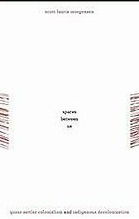
Beyond the books: 3 ways to Increase learning beyond reading
Physically experiencing the land in the area
Exploring the trails and parks in the area to see native wildlife and to get an understanding of the ecological landscape of the region is a fantastic way to contextualize the experiences and lifestyles of previous Indigenous populations. Hiking the Perkiomen trail and Evansburg State Park allowed me to better understand its significance that becomes reflected in the art.
Attending public powwows and other open Indigenous hosted events
Attending Indigenous powwows that are open to the public, as some are closed off to tribal members only, is a fantastic way to experience firsthand how the ceremony is run. The one I attended in Dallas had a variety of tribal historians and archivists for project connections, Indigenous artists, and even the opportunity to participate in some of the dances. Consent is quintessential for any filming and photography, so please make sure to find out the etiquette for that particular ceremony. Below is a link to find powwows in your area! https://calendar.powwows.com/
Gardening is Decolonization-The importance of native species
Through the Ursinus Farm Fellows, I was able to participate in multiple volunteer opportunities in their native species gardens and was able to both learn and plant some native plants in the area. Understanding the ecological landscape and types/purposes of these plants further highlights another consequence of Indigenous displacement which is removal of the environment conducive to those plants. Plants provided a variety of food, medicine, and cultural significance and physically seeing and interacting them was a fantastic way to grow my understanding of them.
Not just History: how to get involved in the present
There are countless ways to aid Indigenous communities on the activist front and the individuals we are studying.
1. Consider financially supporting Indigenous artists through attendance of events, purchase of work online, etc. when searching for commissions or products.
2. Register to Vote and vote for candidates that support Indigenous rights and will to self-determination.
3. Mutual Aid: Amplified by the pandemic, some 2-Spirit artists have put out Mutual Aid requests.
4. Continuing to keep up to date with the field and issues plaguing the community both directly and indirectly.
5. Calling out instances of appropriation and racism towards Indigenous populations.
Examples of the Nuance
1. Intersecting identities and understanding how overlapping of identities of privileges and disadvantages requires an understanding of how they all work together to shape experience.
2. Tribes and LGBTQ+ communities can uphold homophobia and settler-colonialism, but it is important to understand both the precolonial constructions/roles of gender and how settler-colonialism occurred to fully show why this identity struggle is rooted in said settler-colonialism.
3. Language and terminology is extremely specific and identities such as 2-Spirit will be adapted/rejected in a variety of ways by each artist.
4. This art is a form of activism and the production of art, and the transformation of space can be acts of decolonization.
Annotated Bibliography
Allaire, Christian. “This Indigenous Two-Spirit Couple Matches Their Regalia.” Vogue. Vogue, August 17, 2020. https://www.vogue.com/article/adrian-matthias-stevens-and-sean-snyder-indigenous-two-spirit-couple.
Fantastic article highlighting the how fashion as an art can be used to highlight the spiritual significance of 2-Spiriti identity.
Anita, Stallion “The Birth of The Bannock Babes and a Drag Community,” Canadian Art, March 4, 2021, https://canadianart.ca/interviews/the-birth-of-the-bannock-babes-and-a-drag-community/.
This interview provides some insight into the rise of an Indigenous drag space and how they express their genders beyond the gender binary and western expectations of gender performance.
Bick, Michael, “Adapting the Language of Postcolonial Subjectivity: Mimicry and the Subversive Art of Kent Monkman. Salem State University. Retrieved from http://digitalcommons.salemstate.edu/cgi/viewcontent.cgiarticle=1008&context=graduate_theses
As previously highlighted in the gallery, this source further highlights the strategy and brilliance of Kent Monkman's art and why it is so effective.
Boellstorff, T., Cabral, M., Cárdenas, M., Cotten, T., Stanley, E. A., Young, K., & Aizura, A. Z. (2014). Decolonizing Transgender A Roundtable Discussion. TSQ: Transgender Studies Quarterly, 1(3), 419–439. https://doi.org/10.1215/23289252-2685669
Complementing works such as the Space Between Us book recommendation, this source further expands on the complexity and spiritual importance of gender expression of Non cisgender Indigenous people
Brammer, J. P. Native American “Two Spirit” Uses Drag to Connect to His Roots - NBC News. (n.d.). Retrieved April 3, 2022, from http://www.nbcnews.com/feature/nbc-out/nativeamerican-two-spirit-uses-drag-connect-his-roots-n608591
This article further highlights how drag as an art form can be used (through fasion, jewelry, hairstyle, etc.) to indigenize drag spaces.
Cotter, Holland. “A Cree Artist Redraws History.” The New York Times. The New York Times, December 19, 2019. https://www.nytimes.com/2019/12/19/arts/design/kent-monkman-metropolitan-museum.html.
This article highlights the usage of historical events and Western tropes against them by Kent Monkman through his subversive artwork.
“Cris Derksen's Orchestral Powwow.” Celebration of Nations, September 7, 2021.
https://www.celebrationofnations.ca/event/cris-derksens-orchestral-powwow/?msclkid=2209e883ceee11eca3b75374fcaf5eec.
This work highlights how western Orchestral writing and training could be presented through Indigenous music and personal identity.
Gilley, B. J., “Becoming two-spirit: gay identity and social acceptance in Indian country.” (Lincoln: University of Nebraska Press 2006)
This work helps highlights how tribal communities engage, accept, or reject LGBTQ+ members of their community.
Innes, Robert Alexander, and Kim Anderson. 2015. Indigenous Men and Masculinities: Legacies, Identities, Regeneration. Winnipeg: University of Manitoba Press.
https://ursinuscollege.on.worldcat.org/oclc/699521298
Understanding the gender performance and expectation of masculinity further highlights the experiences of many AMAB (assigned male at birth) Indigenous individuals which is often encapsulated in their artwork.
Jae, Johnnie. “Cosplay Spotlight: Dezbah Rose - A Tribe Called Geek.” A Tribe Called Geek - Indigenenerdity for the Geeks at the Powwow, March 5, 2021.
https://atribecalledgeek.com/cosplay-spotlight-dezbah-rose/.
A useful source on how western media such as superhero or science fiction franchises are decolonized through the process of indigenization.
Jolivétte Andrew. 2016. Indian Blood: Hiv and Colonial Trauma in San Francisco's Two-Spirit Community. Indigenous Confluences. Seattle: University of Washington Press.
https://ursinuscollege.on.worldcat.org/oclc/945976517
This reading is vital for understanding the intersectionality of the AIDS crisis within the community.
Krystal, Matthew. 2012. Indigenous Dance and Dancing Indian: Contested Representation in the Global Era. Boulder, Colo.: University of Press of Colorado.
“Lee Maracle.” The Canadian Encyclopedia. Accessed April 2022.
https://www.thecanadianencyclopedia.ca/en/article/lee-maracle?msclkid=b03dacb5cf2811eca91e996e8bf04154.
This article highlights the visibility and activism within the bodily expressive art form of dance.
Minshall, Jacob. “Native American Drag Star Lady Shug Is More than Glamour.” ADVOCATE.
Advocate.com, June 12, 2019. https://www.advocate.com/exclusives/2019/6/12/native-american-drag-star-lady-shug-more-glamour.
This is another valuable resource in understanding the complex blending of identities that goes far beyond the fashion and performance of drag.
Nativemax. “A Word with Og Indigenous Drag Queen Landa Lakes.” Native Max, August 21, 2020. https://nativemaxmagazine.com/a-word-with-og-indigenous-drag-queen-landa-
lakes/.
This article demonstrates how even the name of drag queens can be used as a means of decolonization and how activism is embedded in 2-Spirit and LGBTQ+ Indigenous individuals drag performances.
Perry, Nicole. “Translating the ‘Dead Indian’: Kent Monkman, Miss Chief Eagle Testickle, and the Painting of the American West.” Imaginations, February 23, 2021.
http://imaginations.glendon.yorku.ca/p=13673&msclkid=95062e1fcf1c11ec87684c3448b4e9504e950.
An exploration of the time-traveling drag queen alter ego of Kent Monkman to challenge Western linearity and subverting Wild West tropes.
Shedeen , Kaila. “Call and Response: A Conversation with Jeffrey Gibson.” Sightlines, December 19, 2020. https://sightlinesmag.org/jeffrey-gibson-blanton-exhibition-interview.
This interview sheds some light on some of the background and inspiration of Jeffrey Gibson, who was highlighted in the gallery portion of the site.
Sleeper, Sarah “Contesting knowledge: museums and indigenous perspectives” (Lincoln: University of Nebraska Press 2009).
This reading further highlights the western perspective and approach most museums uphold and what Indigenization and Indigenous agency in museums actually looks like.
Smith, L. T. Decolonizing methodologies: research and indigenous peoples (Second edition). (London: Zed Books 2012)
A good resource for understanding the ethical and decolonization considerations and approaches to Indigenous history.
Zimmer, Vanessa. “Straight out of Sundance: How ‘Drunktown's Finest’ Director Sydney Freeland Found Cinema and Pursued Her Dream.” sundance.org - sundance.org, January 31, 2022. https://www.sundance.org/blogs/straight-out-of-sundance-how-drunktowns-finest-director-sydney-freeland-found-cinema-and-pursued-her-dream/.
Background and interview of Sydney Freeland, who was featured in the gallery. Understanding her journey is necessary for understanding fully what her journey led to, so this article provides useful context.
Personal Thanks
Mentor
Dr. Daggar has been a source of steadfast support and inspiration through her own experience in the field and researching. She puts the human in humanities, and I look forward to continuing this research beyond the Summer Fellows Program.
Ursinus History Department
A special thank you is needed for Dr. Mellis, Dr. O, Dr. Throop, Dr. Chao, Professor Schandler, and Professor Adrian. The flexibility, faith, and support the department has provided laid the foundation for me to grow into the scholar I am today.
Summer Fellows
Thank you to all of my fellow Summer Fellows for making the 8-week program a wonderful experience! Whether it be a Stranger Things marathon night or debating over which Crumbl cookie tastes the best, the shenanigans helped balance the workload tremendously.
Family
Dad, Mom, Connor, Lawrence, and Ethan: Thank you for your belief and support in my scholarship. Nana and Grandpop, your life as educators instilled the importance teaching is and has led me to becoming a historian. MomMom and PopPop, thank you for teaching me the importance of connecting and supporting your local community.
The Groove Lounge/Cherry Hill Friends
Thank you to all my friends back at Cherry Hill for your continued support! From historical discussions in Wawa parking lots and being "Drained" to pick-up basketball and making me laugh no matter how tough things get, your friendships mean the world to me! Stay groovy y'all!
Contact
- Ursinus College Collegeville, Pennsylvania, United States
Please send an email If you have any questions or comments,! If it is outside of the scope of my scholarship, I will do my best to push you towards resources/individuals with the proper authority on the matter.
What's Next?
*Blending gallery and themes sections and increasing artists in gallery
*More digital tools such as timeline and mind map
*Reviews for the book recommendations/why they are important
*Continuing annotated bibliography as I transition into exploring this scholarship for future honors
